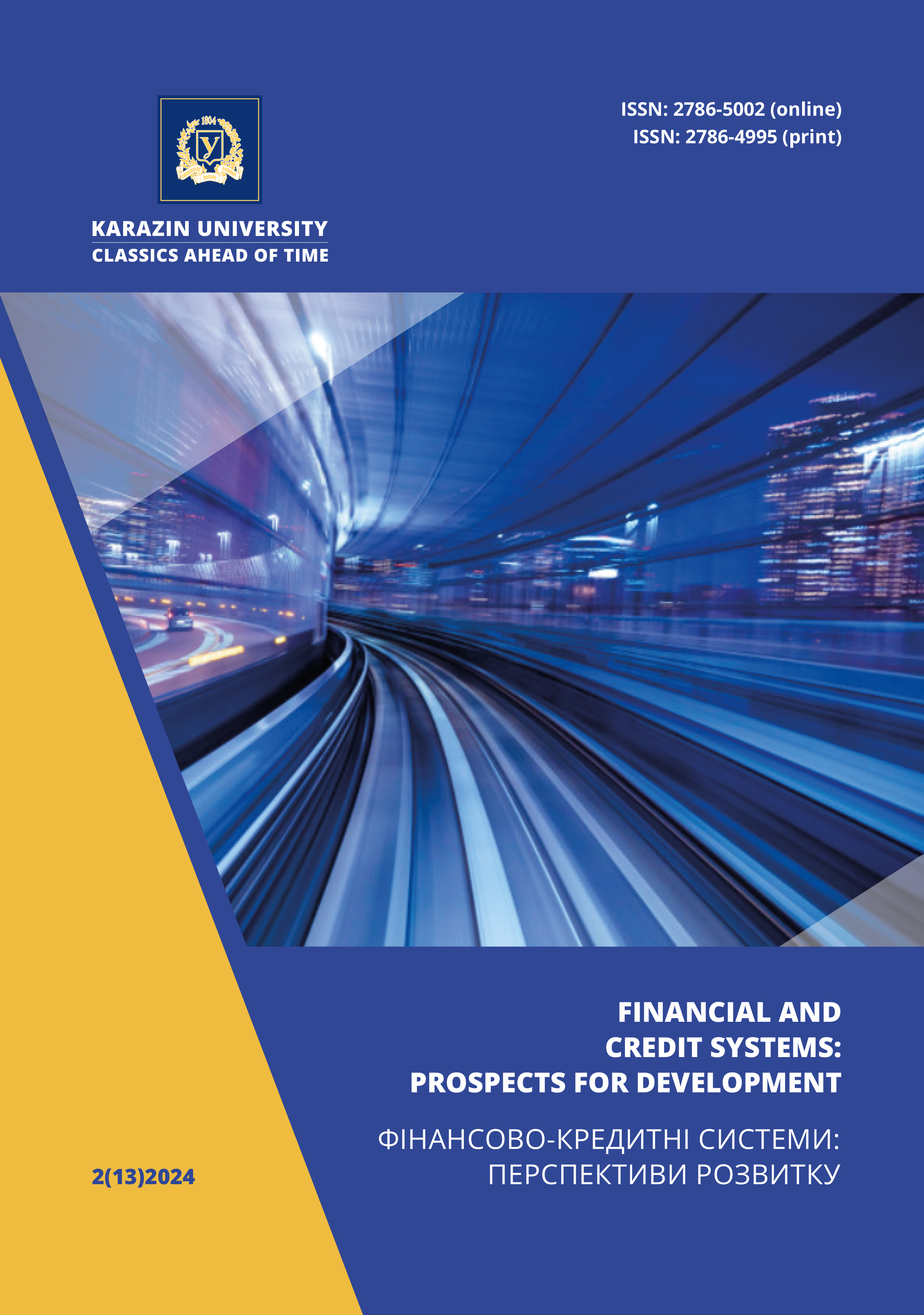Financial crisis: analysis of theoretical approaches and empirical research
Abstract
The global financial crisis of 2007–2009 and its aftermath served as painful reminders of the multifaceted nature of crises. They hit both small and large countries, as well as the poor and the rich. It can be determined that crises represent a threat to equal opportunities.
First, crises can have internal or external roots and come from the private or public sector. They come in many shapes and sizes and can spread quickly across borders. They often require immediate and comprehensive policy action, call for major changes in the financial sector and fiscal policy, and may require global policy coordination. The consequences of financial shocks can be significant and strongly influence the conduct of economic and financial policy. A careful analysis of the consequences of the crisis and the best measures to respond to it have become an integral part of the current political debates of each state in order to build means of operational and strategic response.
Secondly, crises at a certain level are extreme manifestations of the interaction between the financial sector and the real economy. Thus, understanding financial crises requires an understanding of macro-financial relationships, which is indeed a difficult task.
In the most general sense, a crisis is a period of significant difficulties and danger or a peak moment of financial instability, when characteristic changes take place in relation to further recovery at a new qualitative level.
A financial crisis is a state of the financial system that is realized as a result of its imbalances and under the influence of external shocks and is characterized by serious violations in the performance of the system.
The purpose of the study is to review methodological approaches to the study of financial crises for further modeling and empirical research.
The object of research is financial crises as an economic phenomenon.
The theoretical basis of the research is statistical data and models of financial crises in the world economy built by various scientists.
Among the obtained research results is the analysis of theoretical approaches and models of financial crises at the world and national levels.
Downloads
References
Aguiar, M., Gopinath, G. (2006. Vol. 69, No. 1, pp. 64–83). “Defaultable Debt, Interest Rates and the Current Account”. Journal of International Economics.
Allen, F., Gale, D. (2007). Understanding Financial Crises. Clarendon Lectures in Finance (Oxford. UK: Oxford University Press).
Barberis, N., Thaler, R. (2003. pp.1051–121). “A Survey of Behavioral Finance,” in Handbook of the Economics of Finance. ed. by G.M. Constantinides, M. Harris, and R. Stulz (Amsterdam: Elsevier B.V.)
Branch, W., Evans, G.W. (2008. Working Paper 1). “Learning about Risk and Return: A Simple Model of Bubbles and Crashes”. (Eugene. Oregon: University of Oregon Economics Department).
Brunnermeier, M. (2001) Asset Pricing under Asymmetric Information: Bubbles, Crashes, Technical Analysis and Herding (Oxford. UK: Oxford University Press).
Calvo, G., A. Izquierdo Mejia, L.-F. (2004. Working Paper No. 10520). “On the Empirics of Sudden Stops: The Relevance of Balance-Sheet Effects”. NBER. (Cambridge. Massachusetts: National Bureau of Economic Research).
Calvo, G., A. Izquierdo, Mejia, L.-F. (2004. Working Paper No. 10520). “On the Empirics of Sudden Stops: The Relevance of Balance-Sheet Effects”. NBER. (Cambridge. Massachusetts: National Bureau of Economic Research).
Calvo, G., Reinhart, C. (1999. Paper 8951). “Capital Flow Reversals, the Exchange Rate Debate, and Dollarization”. MPRA. (Munich: University of Munich).
Calvo, G.A. (2000. Vol. 51, No. 1, pp. 5–19). “Betting against the State: Socially Costly Financial Engineering”. Journal of International Economics.
Diamond. Douglas. Rajan, R. (2001. Vol. 54, pp. 37–71). “Banks, Short-Term Debt and Financial Crises: Theory, Policy Implications and Applications”. Carnegie-Rochester Conference Series.
Eichengreen, B., Hausmann, R. (1999. Working Paper No. 7418). “Exchange Rates and Financial Fragility”. NBER. (Cambridge. Massachusetts: National Bureau of Economic Research).
Fisher, I. (1933. Vol. 1, pp. 337–57). “The Debt Deflation Theory of Great Depressions”. Econometrica.
Gorton, G., Winton, A. (2003. Vol 1. 431–552). “Financial Intermediation”. in Handbook of the Economics of Finance. ed. by G.M. Constantinides, M. Harris, and R.M. Stulz (Amsterdam: Elsevier).
Gürkaynak, R.S. (2008. Vol. 22. No. 1. pp. 166–86). “Econometric Tests of Asset Price Bubbles: Taking Stock”. Journal of Economic Surveys.
Korinek, A. (2011. Vol. 55. No. 3. pp. 371–85). “Foreign Currency Debt, Risk Premia and Macroeconomic Volatility,” European Economic Review.
Mendoza. (2010. Vol. 100. No. 5. pp. 1941–66). “Sudden Stops, Financial Crises, and Leverage”. American Economic Review.
Pastor, L., Veronesi, P. (2006. Vol. 81. No. 1. pp. 61–100). “Was There a Nasdaq Bubble in the Late 1990s?”. Journal of Financial Economics.
Reinhart, C.M., Rogoff, K.S. (2009). This Time is Different: Eight Centuries of Financial Folly (Princeton, New Jersey: Princeton University Press).
Schwert, G.W. (2003. Vol. 1. pp. 939–74). “Anomalies and Market Efficiency”. in Handbook of the Economics of Finance. ed. by G.M. Constantinides, M. Harris, and R.M. Stulz (Amsterdam: Elsevier B.V.).
Stiglitz, J., Weiss, A. (1983. Vol. 73. No. 1. pp. 246–49). “Alternative Approaches to Analyzing Markets with Asymmetric Information: Reply [The Theory of ‘Screening,’ Education, and the Distribution of Income]”. American Economic Review.
Copyright (c) 2024 Financial and credit systems: prospects for development

This work is licensed under a Creative Commons Attribution 4.0 International License.

